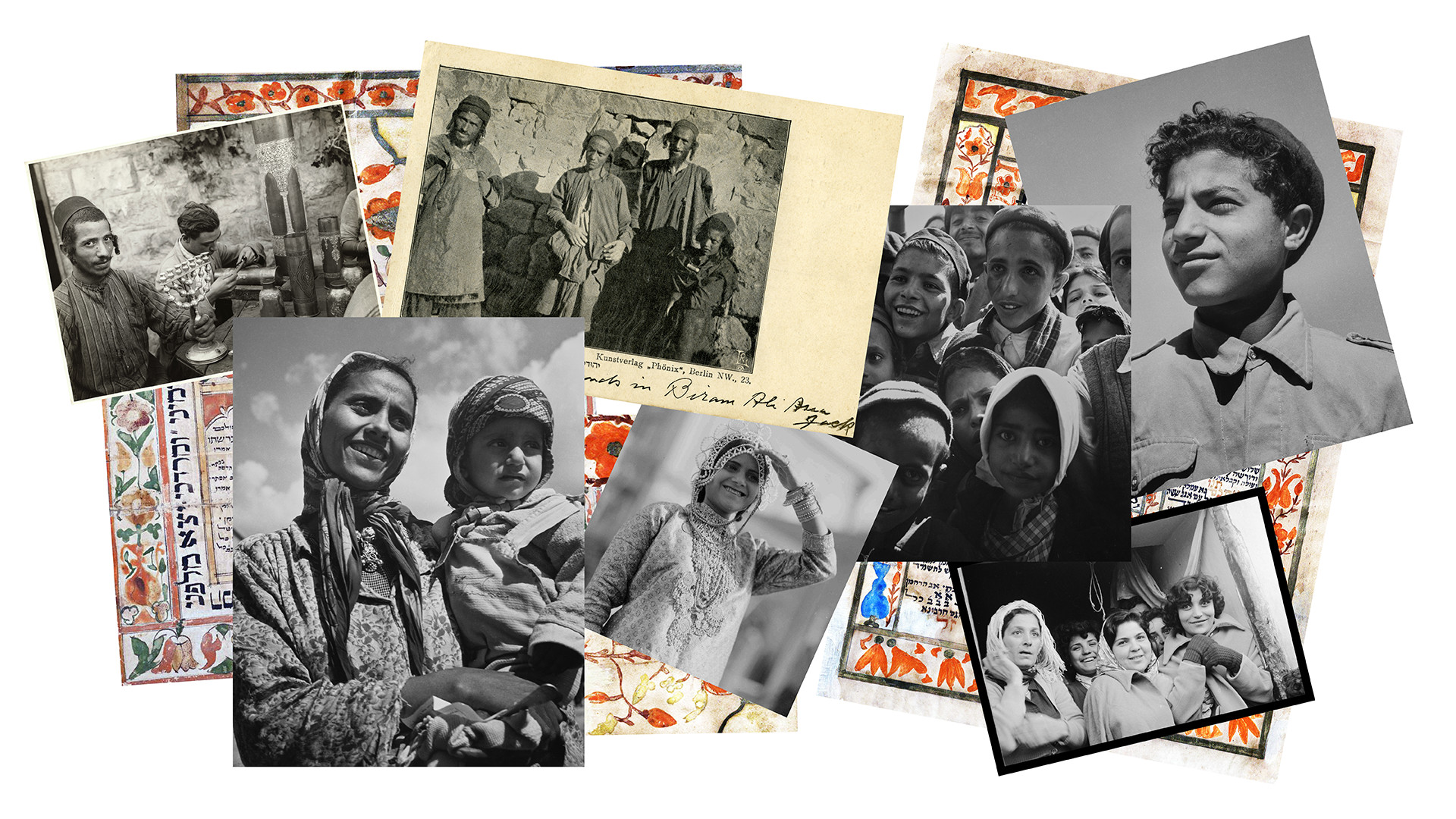
The untold story of Arab Jews — and their solidarity with Palestinians
“This is a struggle between the children of light and the children of darkness, between humanity and the law of the jungle,” Israeli Prime Minister Benjamin Netanyahu said in a speech last October, days into the Israel-Hamas war.
Netanyahu has voiced that idea repeatedly, both before and after the Hamas attack on October 7 — the idea that Israel is a bastion of Western civilization in an uncivilized, backward, and barbarous region.
His mention of “the jungle” recalls a popular Israeli expression, attributed to former Prime Minister Ehud Barak three decades ago, that Israel is “a villa in the jungle.” The jungle, in this case, is the Arab world, and the Palestinians in it are the “beasts” par excellence.
But the idea goes back even further, to the early Zionist thinkers. Theodor Herzl, the Austro-Hungarian father of modern Zionism, wanted to establish a state where Jews could be safe from the violent antisemitism they’d long faced in Europe. He painted a vision of a Jewish state in Palestine that would grant civil rights to the Arabs who remained there (in his diary, he toyed with the idea of transferring some outside the borders). He argued that by bringing Western civilization to the region, Jews would be benefiting the local Arabs economically and culturally — and that the Jewish state would “constitute part of the wall of defense against Asia; we would serve as an outpost of civilization against barbarism.”
This “outpost of civilization” ideology is key to understanding how Israel justified Palestinian dispossession to Israelis and to the world as Jews seeking refuge from persecution settled in Palestine in the 19th and 20th centuries. When Israel was founded in 1948, more than 700,000 Palestinians were expelled or forced to flee their homes in what is now the Jewish state.
But from the early days of the state, there was a group that didn’t buy the justification: Jews with roots in the Arab and Muslim world.
Called Mizrahim in Israel, these Jews today make up the largest ethnic group in the country. They mostly immigrated to Israel after 1948, and for much of the country’s history, they’ve been victims of the same kind of anti-Arab ideology that is wielded against the Palestinians.
For centuries, Mizrahi Jews had enjoyed high status in their countries of origin in the Middle East and North Africa, which ranged from Iraq to Egypt to Morocco. But when they landed in Israel, they found that the new state was ruled by European Jews, called Ashkenazim, who overwhelmingly viewed them as primitive and culturally backward.
Mizrahi intellectuals at the time were quick to link the discrimination against them to the discrimination against Palestinians. Orientalism — Palestinian scholar Edward Said’s term for a European tendency to portray “the East” as exotic, irrational, and uncivilized — was being used to cast both groups as inferior and deny them equal rights. Their struggle was one and the same. And so, starting in the 1950s, Mizrahim and Palestinians formed a solidarity movement, producing everything from joint magazines to joint street protests.
This movement offers a counterpoint to the “villa in the jungle” view of Israel — an alternative vision for how Jews and Palestinians can live together on the land. It also offers a more nuanced way to think about contemporary debates on the meaning of indigeneity, nationhood, and colonialism in Israel-Palestine.
The vision of Mizrahi-Palestinian solidarity seems even more important in light of what has actually happened in more recent decades: Mizrahim drastically moved to the political right, and solidarity with Palestinians became Israel’s road not taken. Understanding that swerve is key to understanding what went wrong in Israel’s history that made it unable to imagine coexistence with an Arab people. And it may be key to building a better future for all.
Who are Mizrahi Jews?
Mizrahi Jews came to Israel from the Middle East, North Africa, and Asia, often from Arab countries. (Although they’re sometimes lumped together with Sephardic Jews, with whom they share some religious customs, the term “Sephardic” technically refers to Jews from Spain and Portugal.) But before emigrating to Israel, they would not have thought of themselves as Mizrahi; that term, meaning “Eastern” or “Oriental” in Hebrew, was coined in 20th-century Israel.
Most would have simply thought of themselves as “Jewish Iraqis,” say, or “Moroccan Jews,” depending on their country of origin. But some described themselves as “al-yahud al-arab,” or “Arab Jews” — and their Muslim neighbors occasionally used that term to describe them, too.
Nowadays, it’s so common to hear about animosity between Jews and Arabs that many people may think the relationship was always a hostile one, and the term “Arab Jew” sounds almost like an oxymoron. But for centuries, Jews were deeply integrated into Arab society, serving as musicians, merchants, and even government ministers. They consumed and produced culture in Arabic. Their philosophy and theology was profoundly influenced by Islamic thought and vice versa. There were Arab Jews as surely as there are Arab Christians.
That said, “Arab Jew” is a contested identity today. Many Jews with roots in the Arab and Muslim world, disillusioned by how that world treated Jews — particularly after Israel’s founding — prefer terms like “Mizrahi.” Still, some scholars refer to them as Arab Jews to emphasize how much they identified with Arab culture before the creation of Israel.
Take my family, for example. My father’s side is from Baghdad, Iraq. A century ago, Jews like us made up one-third of Baghdad’s population. They were prominent in the Iraqi parliament and in the judicial system. They were all the rage in the music scene. In the 1920s, King Faisal I of Iraq affirmed their integral role, declaring, “There is no meaning for words like Jews, Muslims, and Christians within the concept of nationalism. This is simply a country called Iraq and all are Iraqis.”
The story is similar in Morocco, where my mother’s side is from. During World War II, when the French Vichy regime tried to impose Nazi persecution in Morocco, King Mohammed V refused: “There are no Jews in Morocco,” he said. “There are only Moroccans.” There, too, Jews held top positions in government. They cultivated deep friendships with their Muslim neighbors — so deep that, when I visited Morocco and found a 90-year-old man who’d known my family 70 years ago, he got so excited that he shouted my grandfather’s name over and over with glee.
The point is not that Jews were always safe under Arab or Muslim rule — they weren’t. It depended on the time, on the place, and on which empire was in power. For example, Jews experienced persecution in medieval Yemen, and in 1656 they were expelled from Isfahan, Iran.
But if you were a Jew living in the vast and long-lasting Ottoman Empire, you had it relatively good. Muslim rulers viewed Jews as “People of the Book” — fellow monotheists who, though they ranked below Muslims, nevertheless were entitled to respect and protection so long as they paid a special tax.
It was very unlike what was happening in Christian Europe, where Jews were blamed for everything from the death of Jesus to the bubonic plague. On the whole, in the Muslim world, Jews coexisted with their neighbors to a remarkable degree for two millennia.
“It was a comfortable age in comparison to life in Europe,” said Orit Bashkin, a professor of Middle Eastern history at the University of Chicago. Although there were ups and downs, “in general, the Jews in Muslim lands thrived.”
Yet today, the remaining Jewish communities in the Middle East and North Africa are vanishingly small.
Why did Mizrahi Jews leave Arab countries?
While Middle Eastern Jewish communities survived — and often thrived — under Arab or Muslim rule for over 2,000 years, they ultimately could not survive the founding of the state of Israel.
During and after World War II, hundreds of thousands of Jews fleeing genocide in Europe settled in Palestine. By 1947, amid calls for a state that would serve as a safe haven for Jews after the Holocaust, the United Nations partitioned Palestine, which at the time was controlled by the British Empire, into an Arab state and a Jewish state.
But Egypt’s delegate to the UN warned at the time, “The lives of one million Jews in Muslim countries will be jeopardized by the establishment of a Jewish state.” The fear was that in the Arab world, all Jews would be seen as supporters of Zionism, and that Arab countries would turn on Jews within their borders as a result.
Sadly, that’s exactly what happened.
To understand why this was such a seismic moment, we have to remember that this was also a time in world history when the great world empires were being shaken up amid efforts to decolonize. Tectonic shifts were happening in political ideology — including in the Arab world, where the forces of Arab nationalism had been brewing for years.
In the 1930s and 1940s, Arab countries like Iraq and Transjordan had gained independence from European powers, most notably the British. Arab nationalists in these countries pictured the whole Arab world as a single unified nation. It was a pan-Arab vision that stretched to include Palestine — where tensions were rising between Palestinians and Jews as European Jews began immigrating there in greater numbers.
Even before the state of Israel was founded, this put Jews in the Arab world in a confusing position. Would Arab Jews see themselves as part of the Arab nationalist movement? Would other Arabs perceive them that way? The answer varied. Some Jews felt so much a part of Arab culture that they supported Arab nationalism — including in Palestine.
“We are Arabs before we are Jews,” wrote the Iraqi Jewish educator Ezra Haddad in 1936. In 1938, a group of Iraqi Jewish professionals told the press they were “young Arab Jews” who supported an Arab Palestine.
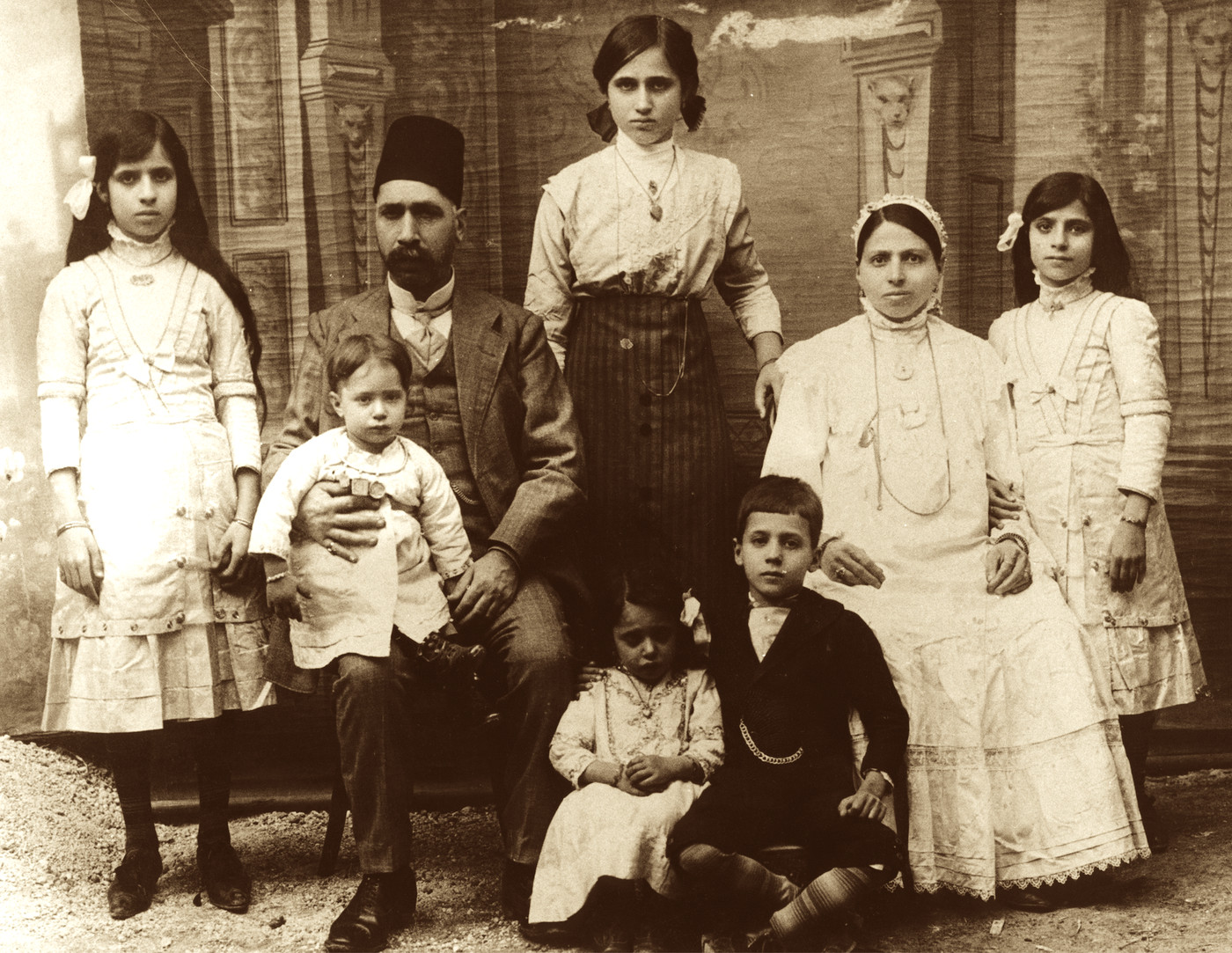
A Jewish family in Baghdad in 1912.
But many of their non-Jewish neighbors perceived the Jews as supporting the British instead of supporting the Arab countries’ efforts to get out from under colonialism. A rift had opened.
Then, the state of Israel was founded, and the rift turned into a gaping chasm. Now Jews in Arab countries were also suspected of supporting the removal of Palestinian Arabs from their land to make way for a Jewish state.
Across the Arab world, Jews became targets of suspicion, viewed as possible spies for Israel. They were sacked from government positions, arrested, and even executed on the accusation of collaborating with Zionist activities. Anti-Jewish riots erupted. Jews’ property was confiscated, their assets frozen. In many cases, conditions became so hostile that they were effectively forced out.
In other cases, Jews left the Arab world because they wanted to. Some felt a deep religious yearning to return to the Holy Land. Besides, Zionist emissaries had been active in these countries since the early 1940s, trying to inspire Jews to immigrate.
In other words, there was both a push and a pull. The net result was an exodus of Middle Eastern and North African Jews to the fledgling state of Israel.
What was life like for Mizrahi Jews in Israel?
Although Zionist envoys had promised Mizrahim they’d find a better life in Israel, in reality, these Jews were in for a massive disappointment.
It started as soon as they got off the planes. First, they were sprayed with the insecticide DDT to “disinfect” and “delouse” them. Then they were sent to live in transit camps known as ma’abarot — tent cities with no electricity, running water, or basic sanitation.
Later, they were moved to poor towns known as development towns, which offered permanent housing but little infrastructure or economic opportunity. Through the 1950s, Israel struggled to build enough housing for the immigrants flooding in from both the Arab world and Europe, but European Jews were given better housing in more desirable cities.
That’s because, in the eyes of the ruling Ashkenazi elite, their fellow European Jews were already civilized, while Mizrahi Jews were primitives — or, as the Mizrahi intellectual Eliyahu Eliachar put it, the “white man’s burden.”
For a painful example of this attitude in action, consider what came to be known as the “Yemenite Children Affair.”
Between 1948 and 1954, somewhere between 1,500 and 5,000 Mizrahi children — mostly Yemenite children — were disappeared from Israeli hospitals, either immediately after birth or when they were taken to see a doctor for some medical problem. The parents were told that the children had died, but no proof was given. Some Mizrahi Jews believed that the babies were given to childless Ashkenazi couples.
In recent years, these claims have been substantiated with the help of DNA testing. The Israeli government minister charged with investigating the affair publicly acknowledged a few years ago that the abductions did take place.
Testimonials show that hospital staff kidnapped the children because of a belief that Mizrahi Jews were unfit parents with too many babies. Giving the kids to Ashkenazi couples would be doing everybody a favor, in their view — including the young state of Israel, which would get a new generation of citizens shorn of the “backward” Mizrahi influence.
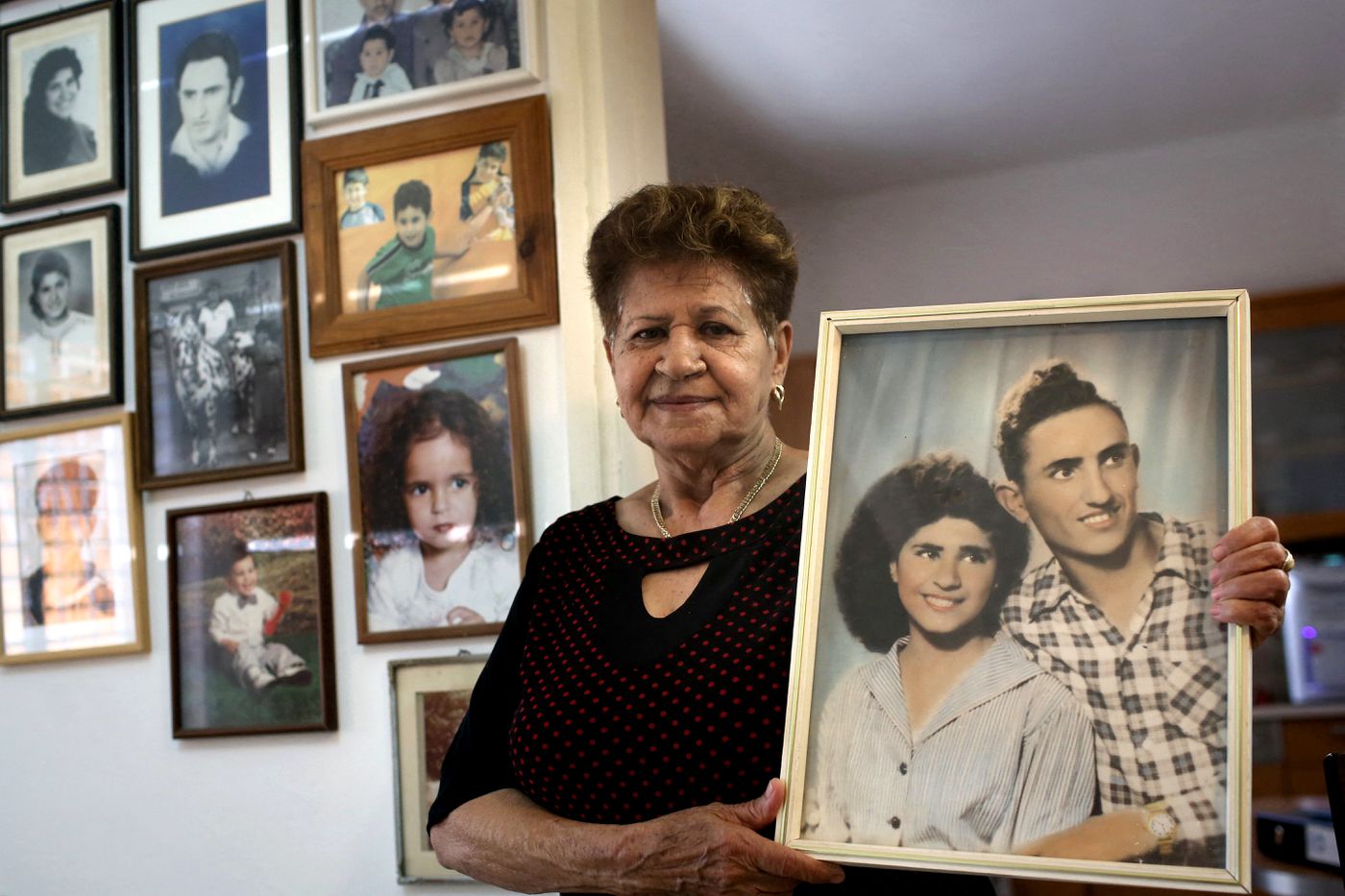
Yona Musa, 76, of Yemeni descent, poses with a portrait of her and her husband at her home in Israel in 2016. Musa is one of thousands of Israelis who say their babies were abducted.
It wasn’t just the old European Orientalist ideology that demanded Mizrahi Jews be “civilized” and shed their cultures. It was also a political fact that was distinctly Israeli. In the 1948 war that led to the creation of Israel — which Israelis know as the War of Independence but which Palestinians know as the Nakba, Arabic for “catastrophe” — neighboring Arab countries had attacked Israel. “Arab” became synonymous with “enemy,” and anything that threatened to blur the boundary between Jews and Arabs had to be excised.
In the quest to de-Arabize the Arab Jews, Israel invented “Mizrahi” as a social category. Now these Jews would have no use for unacceptable identifiers like “Arab” or “Lebanese” or “Syrian” — they would all just be Mizrahi. (Persians, Turks, and Indians who were not Arab were also included in the umbrella category of Mizrahim because they were perceived as “Oriental” or “Eastern.”)
The repulsion for all things Arab also meant that Mizrahim had to give up their mother tongue, Arabic, which had previously united them with neighbors in their countries of origin and which Israel now viewed as the language of the enemy. It was a painful rupture perhaps best captured in the words of Moroccan-Israeli author Sara Shilo: “Along came the knife of Hebrew and cut us in two.”
The fascinating, little-known history of Mizrahi-Palestinian solidarity
Mizrahim faced such intense discrimination that some came to see themselves as victims of Zionism and warned remaining family members back home not to emigrate to Israel. In fact, thousands of Jews from North Africa and Asia actually left Israel and returned to their former countries.
In one memorable protest in 1951, Indian Jews announced a hunger strike to the death and made a single demand of Israel: “You brought us here — we want you to send us back.” Israel ended up flying them back to Bombay.
Most Mizrahi Jews, however, stayed put in Israel. They did what immigrants do: They tried to assimilate. If that meant shedding their Arabness to buy social capital, so be it.
But there were resisters, too. Mizrahi intellectuals analyzed Zionist ideology and argued that it grew out of 19th-century European nationalist thinking, where colonialism was seen as noble and Orientalism was de rigueur.
After all, in the early 1900s, Herzl had turned to the British for support in creating a Jewish state because, as he said, “the Zionist idea, which is a colonial idea, must be understood in England easily and quickly” given that England was “the first to recognize the necessity of colonial expansion in the modern world.” Colonialism was portrayed as a way to “civilize” the world. Israel’s first prime minister, David Ben-Gurion, unabashedly said, “We do not want Israelis to become Arabs. We are in duty bound to fight against the spirit of the Levant, which corrupts individuals and societies.”
Given this ideology, it was no surprise that Zionism would cast Arabs as uncivilized brutes — whether they were Jewish or Palestinian. The very same ideology was oppressing both groups, Mizrahi intellectuals realized. And so they formed a solidarity movement.
In 1953, Arabic-speaking intellectuals created a magazine called al-Jadid, which published poetry and fiction written by Mizrahi Jews and Palestinians. The editors said they wanted to shine a light on anti-Mizrahi and anti-Arab discrimination “out of the spirit of [establishing] Arab-Jewish solidarity,” according to Bryan K. Roby’s book The Mizrahi Era of Rebellion.
This solidarity extended into the streets. When Mizrahim and Palestinians joined together in grassroots protests, carrying signs that stated “Bread — Work — Peace” and “For a united and persistent struggle,” the Israeli police responded with heavy force.
Even just talking to each other was risky business. As Roby documents, one officer told a Bedouin Arab who had been speaking to Mizrahim in the southern city of Beersheba, “For you it is permitted to visit the city, but it is not right for you to talk to the population.”
Despite what Roby describes as “the government’s divide-and-conquer efforts to plant the seeds of mutual hatred between Palestinian and Mizrahi citizens,” Mizrahim like the Iraqi-born writer Latif Dori urged the creation of a joint socialist youth movement for Mizrahi and Palestinian teens to cement “a bridge of understanding” between the Jewish and Arab peoples. Dori wrote that “our common struggle” is the only way to create a positive future for “the two brotherly peoples” standing “hand in hand in front of the nationalist waves.”
“The real original sin of the Zionist movement was the fact that, in returning to our Homeland, which is part and parcel of the Orient, we did everything we could to estrange ourselves from the Middle East in which we wanted to live,” Mizrahi intellectual Eliyahu Eliachar said in an interview in 1975. Elsewhere, he wrote, “Ultimately, the [Mizrahi] problem is closely bound up with the Arab problem: for it is only when Israel is able to acknowledge to itself that it is, among other things, an Oriental country, that Israelis will be able to prepare themselves for a constructive encounter with the Arabs.”
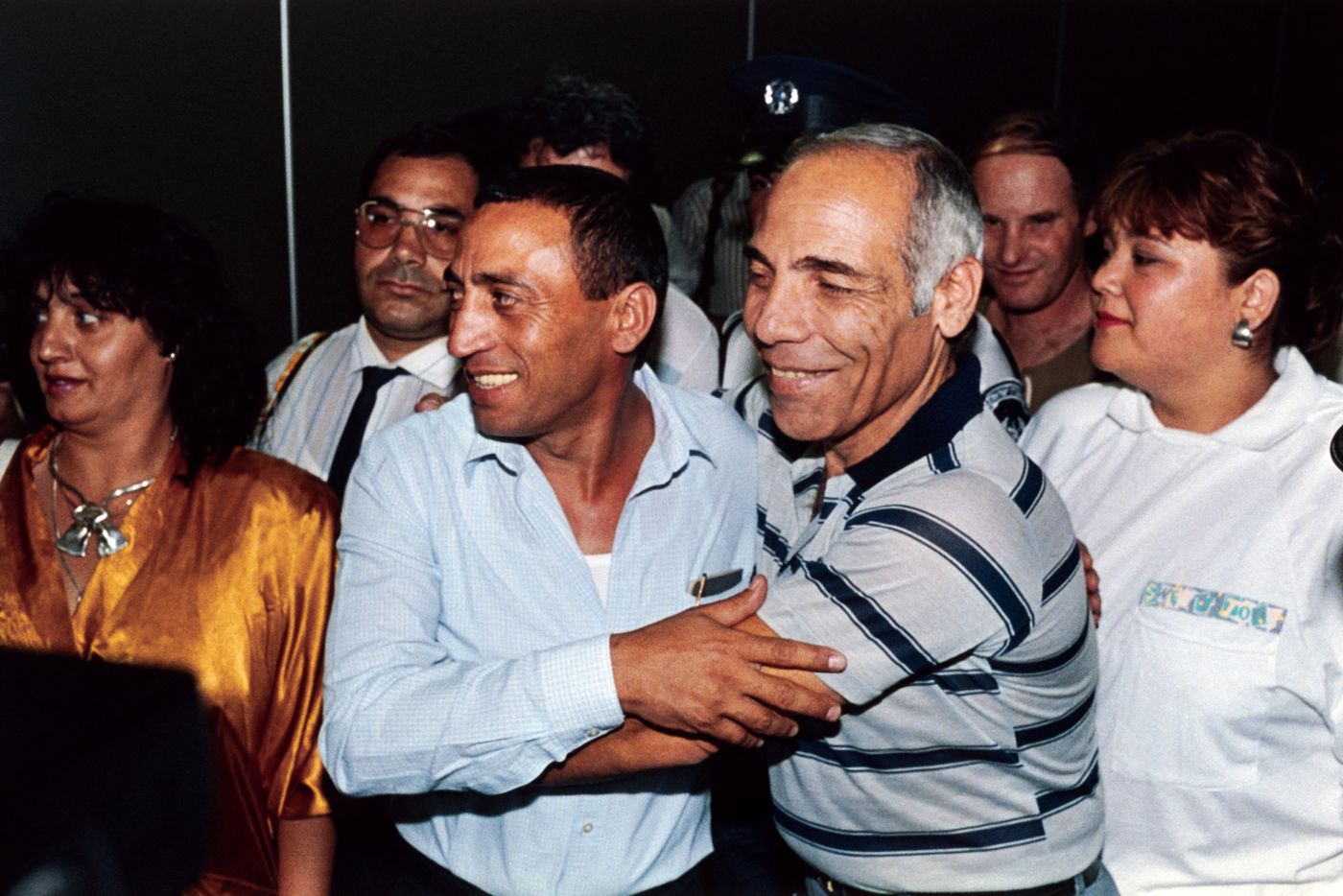
Charlie Biton (left), head of the Israeli delegation for peace talks with senior Palestine Liberation Organization officials in Budapest, receives a hug from Latif Dori on June 14, 1987, upon his arrival in Tel Aviv.
Mizrahim in those days also felt an affinity with another oppressed group: African Americans. The Ashkenazim for whom they did menial labor often derogatorily referred to Mizrahim as “shvartse khaye,” or black animals. So they reclaimed their “blackness” and found inspiration in the US civil rights struggle.
So much so that by the 1970s, Mizrahim had formed the Israeli Black Panther movement to fight for social justice. Despite then-Prime Minister Golda Meir famously complaining that “they are not nice people,” the Panthers got the government to shift resources toward Mizrahi communities to fight poverty and inadequate housing, at least for a time. Panther leader Charlie Biton — who named his daughter Angela after political activist Angela Davis — met with members of the Palestinian Liberation Organization to rally together those victimized by Israeli policies.
Colonialism, indigeneity, and nationhood — from a Mizrahi perspective
Yet for many Mizrahim, the goal was not to fight the idea of a Jewish homeland per se but to fight Ashkenazi Zionism, which they saw as intrinsically colonial and racist. They recognized that there’s a difference between migrating and colonizing, and they had no problem with Jews returning to live on their ancestral land so long as they did not dispossess or exploit the Palestinians who already lived there.
This view stood in stark contrast to an early Zionist slogan that described Palestine before Jewish settlement as “a land without a people for a people without a land.”
It’s worth taking a moment to understand what that slogan really means. It’s not that early Zionists literally thought Palestine was an uninhabited desert — when Herzl visited, he saw the local Arabs with his own eyes and called them “the indigenous population.”
In fact, European Jews who settled in the land in the early 1900s romanticized the locals as emblems of native authenticity, to the point that it was trendy for young Zionists to dress in Bedouin shepherd garb and sprinkle their Hebrew with Arabic phrases. As one later wrote, “we were dying to be like them … to talk like them, to walk like them, we imitated them in everything … We regarded them as the model of the native.”
Clearly, there were already people on this land. But in the view of many early Zionists, there wasn’t a people. Herzl called them “a mixed multitude,” a hodgepodge of different populations rather than one coherent ethnic group. According to the 19th-century European logic of nation-state building, only a unified nation could stake a nationalist claim, so the local Arabs’ heterogeneity invalidated any rights to the land that they might have on the basis of their indigeneity.
Ashkenazi Zionists were happy to view Arabs as romantic ideals while they lacked power but would reconstruct them as the “other” when they became too much of a threat by opposing Jewish statehood in Palestine. So it was that Zionists went from cosplaying as Arabs before the founding of Israel to discriminating against them afterwards.
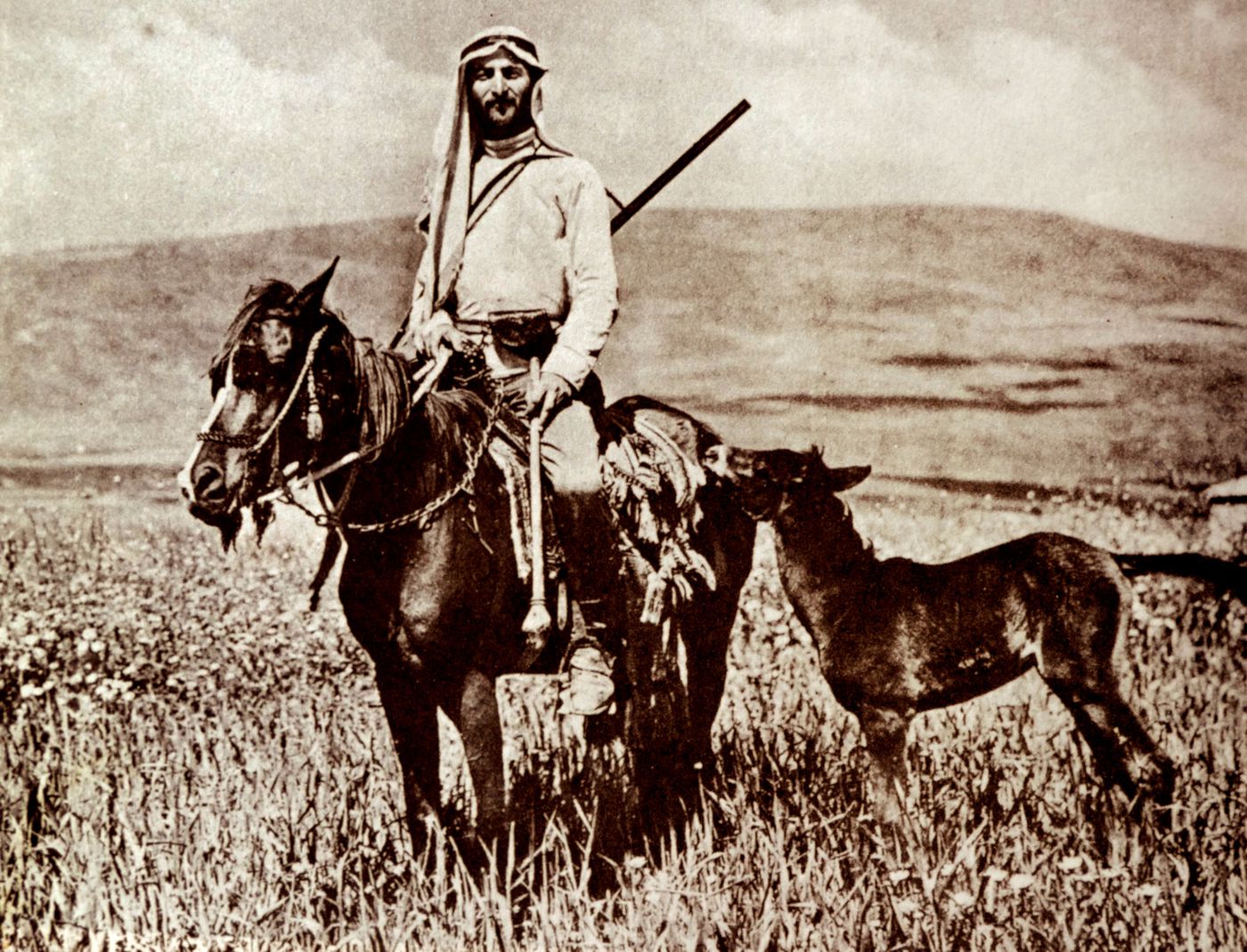
A Zionist guard in Bedouin shepherd garb protecting a small settlement in Palestine in the early 1900s.
Meanwhile, the Ashkenazi Zionist movement was trying to produce a unified Jewish people in order to stake a nationalist claim. To achieve that, it had to strip Mizrahim of any markers of Arab identity, which challenged the picture of unity. Yet this paradoxically showed that peoplehood was not a fixed essence but a manufactured construct, with pieces that could be removed at will. Indigeneity and nationhood were socially constructed categories, constantly shifting depending on the political needs of the day.
Mizrahi intellectuals refused to lift up Jewishness while denigrating Arabness. Instead of agreeing to a form of Zionism that would build a nation-state with one nation at the top, they pushed for a reformulation that would grant equal rights to all inhabitants of the land. The only route to that kind of a universalist vision would be to give up Herzl’s idea that Jews were there to be “an outpost of civilization against barbarism.”
But by the 1970s, historical events had narrowed the space for imagining a version of Israel that could offer everyone equal rights. In the 1967 Arab-Israeli war, Israel captured the West Bank from Jordan, Gaza and the Sinai Peninsula from Egypt, and the Golan Heights from Syria, massively expanding the territory under its control. Roughly 300,000 Palestinians were displaced from the newly occupied territories, and millions came under Israeli military occupation. Though Israel later gave back Sinai, it maintained varying degrees of power over the other areas.
Can Jewish-Palestinian solidarity be more than a romantic vision today?
You might expect, based on their history, that Mizrahi Jews would be associated with the Israeli left today. Yet that’s not the case: Many Mizrahim are now right-wing. In fact, it’s impossible to understand Israel’s lurch to the right and the rise of the hawkish Likud party without understanding the trajectory of the Mizrahim. So, what happened?
For starters, the experience of being kicked out of Arab countries post-1948 naturally soured many Jews’ feelings toward the Arab world. Plus, from the moment they arrived in Israel, the experience of discrimination taught Mizrahim that gaining social status was contingent on rejecting Arabness.
And what better way to reject it than to become the most nationalist and the most anti-Arab of all?
As Smadar Lavie, a Mizrahi anthropologist and author of Wrapped in the Flag of Israel, put it to me, “If your only choice is to wag your racial purity — you need to prove that you’re a good Jew, which means you’re a nationalist Jew — then that’s what you’ll do.”
But there was another factor at play. For the first three decades of Israel’s existence, it was ruled by the Labor Party, which was rooted in both socialism and Ashkenazi Zionism. In practice, that meant building up leftist institutions like the kibbutz — a kind of utopian agricultural commune that stretches back to Zionism’s early days — even while pushing Palestinians off their land and discriminating against Mizrahim (who were more likely to be hired as cheap laborers on a kibbutz than to gain membership in it).
This was the version of “leftism” that Mizrahim encountered. For many, continuing to support the Labor Party when it represented the Ashkenazi Zionists who oppressed them was an extremely unappealing prospect.
Meanwhile, the Israeli right, which favored an even more hardline approach toward the Palestinians, strategically used the left’s discrimination against Mizrahim to its own advantage. From the 1950s to the 1970s, it invested in courting Mizrahim by promising them concrete benefits and upward mobility.
This culminated in a historic election upset in 1977, when Mizrahim helped unseat the governing Labor Party by voting for the right-wing Likud Party led by Menachem Begin. As Mizrahim formed an attachment to Likud, they adopted some of its political views.
Today, Netanyahu, who opposes the idea of a Palestinian state and has presided over the mushrooming of Israeli settlements that undercut the viability of creating one, leads Likud. Mizrahim — who remain economically disadvantaged compared to Ashkenazim — are a crucial part of his base.
Of course, there are some left-wing Mizrahim. They’ve tried to join forces with the Israeli left, which is today Ashkenazi-dominated. But many told me that they’ve come away alienated, feeling Ashkenazim ignore the issues that matter to them — like poverty and housing inequality, which are the legacy of racial discrimination within Israel.
“I really wanted to be part of the peace movement. But I’m not sure the peace movement wanted me,” said Sapir Sluzker-Amran, one of several Mizrahi activists I spoke to who said they’ve felt marginalized, patronized, or tokenized by the left.
These Mizrahim have periodically tried to reboot the old vision of solidarity with Palestinians by founding their own groups, like the Mizrahi Democratic Rainbow Coalition in the 1990s, Breaking Walls in 2019, and the Mizrahi Civic Collective in 2023.
Netta Amar-Shiff, a Mizrahi human rights lawyer who helps lead that last group, insists that Israelis’ future is bound up with Palestinians’ future, as the prolonged conflict puts both populations in danger. “I know that if Palestinians are not safe, I won’t be safe. It’s either mutually assured destruction or mutually assured salvation,” she said, sounding a lot like the intellectuals of the 1950s.
Yet now, as then, these Mizrahi bridge-building groups are starved for resources. “There is always a minority that keeps the solidarity alive,” Orit Bashkin told me. “But right now, with very minor exceptions, this solidarity is more or less dead.”
Since Mizrahim make up the largest share of Jews in Israel, that bodes poorly for Israel’s prospects for peace. And it’s not just Mizrahim — over the years, the Israeli public as a whole has been moving to the right.
A few years ago, Sluzker-Amran created a public archive that houses materials related to Mizrahi history, from protest flyers to the writings of bygone intellectuals. She wants people to have a true reckoning with the Mizrahi experience. That experience reveals the particular aspects of Ashkenazi Zionist ideology that made Israel unable to imagine coexistence with an Arab people.
Like a three-sided prism that refracts the light anew, looking at Israel through the triangulated history of Palestinians, Ashkenazim, and Mizrahim allows us to see the problem properly illuminated so we can grope our way toward a solution.
“We always wanted to have the chance to build a movement that pursues justice for all communities — the Palestinians would be a big part of that,” Sluzker-Amran said. “But we’ve never had a chance to really do that experiment. I feel like we’re always sitting in the archive.”
She hopes more people come to see the Mizrahi vision of solidarity like she does: as a grand experiment just waiting to be tried.
News Related-
AWS and Clarity AI to use generative AI to boost sustainable investments
-
Ref Watch: 'Enough' of a foul to disallow Man City goal vs Liverpool
-
Day in the Life: Ex-England rugby star on organising this year's Emirates Dubai Sevens
-
Pandya returns to MI, Green goes to RCB
-
Snowstorm kills eight in Ukraine and Moldova, hundreds of towns lose power
-
‘This is why fewer Sikhs visiting gurdwaras abroad’: BJP after Indian envoy heckled in Long Island
-
Inside a Dubai home with upcycled furniture and zero waste
-
Captain Turner aims for Pitch 1 return as JESS bid to retain Dubai Sevens U19 crown
-
No Antoine Dupont but Dubai still set to launch new era for sevens
-
Why ESG investors are concerned about AI
-
Your campsite can harm the environment
-
Mubadala, Saudi Fund deals on US radar for potential China angle
-
Abu Dhabi T10 season seven to kick off with thrilling double-header
-
Eight climate fiction, or cli-fi, books to consider before Cop28
